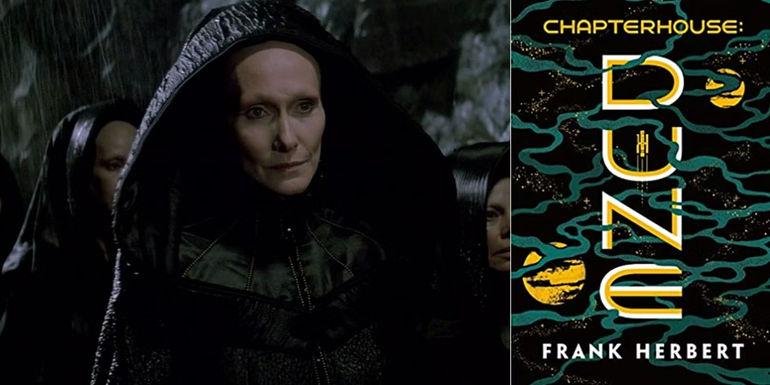
The Legacy of Frank Herbert's Dune Books: Ranking and Reflection

A comprehensive look at the influential Dune series by Frank Herbert, from its origins to its impact on modern sci-fi adaptations.
The Legacy of Dune
Frank Herbert's Dune series has left an indelible mark on the science fiction genre for over half a century. Set in the vast desert planet Arrakis, the epic narrative follows the journey of Paul Atreides, a young man destined to become a messiah. What begins as a classic hero's adventure evolves into a multifaceted exploration of power, corruption, hero-worship, capitalism, and ecology, spanning thousands of years. The profound themes and philosophies embedded in the Dune novels have captivated readers since the release of the first book in 1965, laying the groundwork for much of contemporary science fiction.
Dune Messiah book cover and Paul Atreides
Following Frank Herbert's six groundbreaking Dune books, the series has continued to expand under the stewardship of his son, Brian Herbert, and co-author Kevin J. Anderson. The enduring legacy of Dune has manifested in film adaptations, a television series, and a rich array of novels, short stories, and graphic works. With the recent success of Denis Villeneuve's adaptation, there is renewed interest in the series, prompting a closer examination of how each of Frank Herbert's Dune books ranks.
Bene Gesserit and Chapterhouse: Dune book cover
Exploring the Rankings
The Dune series consists of six distinct books, each contributing to the rich tapestry of the universe created by Frank Herbert. Let's delve into the rankings and insights on these influential works, shedding light on their impact and significance in the realm of science fiction literature.
Dune sandworm and Heretics of Dune cover art
The second book in the series, Dune Messiah, initially faced mixed reception upon its release. While it expanded on key themes and introduced notable factions, it was often regarded as the weakest entry in the series. Despite this, Dune Messiah offers a thought-provoking deconstruction of the hero archetype, challenging notions of power and influence. Its significance in the context of the forthcoming film adaptation adds a layer of anticipation to the exploration of Paul Atreides' complex narrative.
Split image of the cover of Children of Dune book and a promo poster for the series
Chapterhouse: Dune, the sixth and final book, presents a unique shift in setting and perspective, offering a compelling exploration of the Bene Gesserit order's power dynamics. While some view it as a stretch beyond the series' limits, others see it as a fitting epilogue that enriches the lore of the Dune universe.
Leto II and Ghanima in 2003 TV miniseries Frank Herbert's Children of Dune
Heretics of Dune, the fifth installment, marks a significant shift in focus toward the Bene Gesserit and introduces a more action-packed narrative. The emergence of new characters and the passage of time in the Dune universe provide a fresh perspective, enticing readers with its gripping storytelling.
Farad’n walking in a room full of people in Children of dune
Evaluating the Classics
The Dune series encompasses a diverse range of narratives, each contributing to the overarching saga in distinct ways. Children of Dune, the third book, introduces a divisive shift in focus to Paul Atreides' children, Leto II and Ghanima, expanding the series' mythology and setting the stage for future developments. God Emperor of Dune, the fourth book, delves into profound philosophical explorations, with Leto II serving as the mouthpiece for complex ideas and themes. Despite its divisive nature, it is revered as one of the best works in the series, showcasing the depth of Herbert's storytelling.
The Preacher in a tattered robe in Children of Dune
The series' inaugural installment, Dune, serves as the foundation for the entire saga, presenting a standalone narrative that has captivated readers for decades. Its extensive world-building and iconic elements have solidified its status as a timeless treasure in science fiction literature, setting the stage for the expansive universe that unfolds across the subsequent books. With the anticipation surrounding the upcoming release of Dune 2, the legacy of the original Dune novel continues to resonate in modern adaptations, reaffirming its enduring significance.
Duncan Idaho walking with Alia in Children of Dune



















